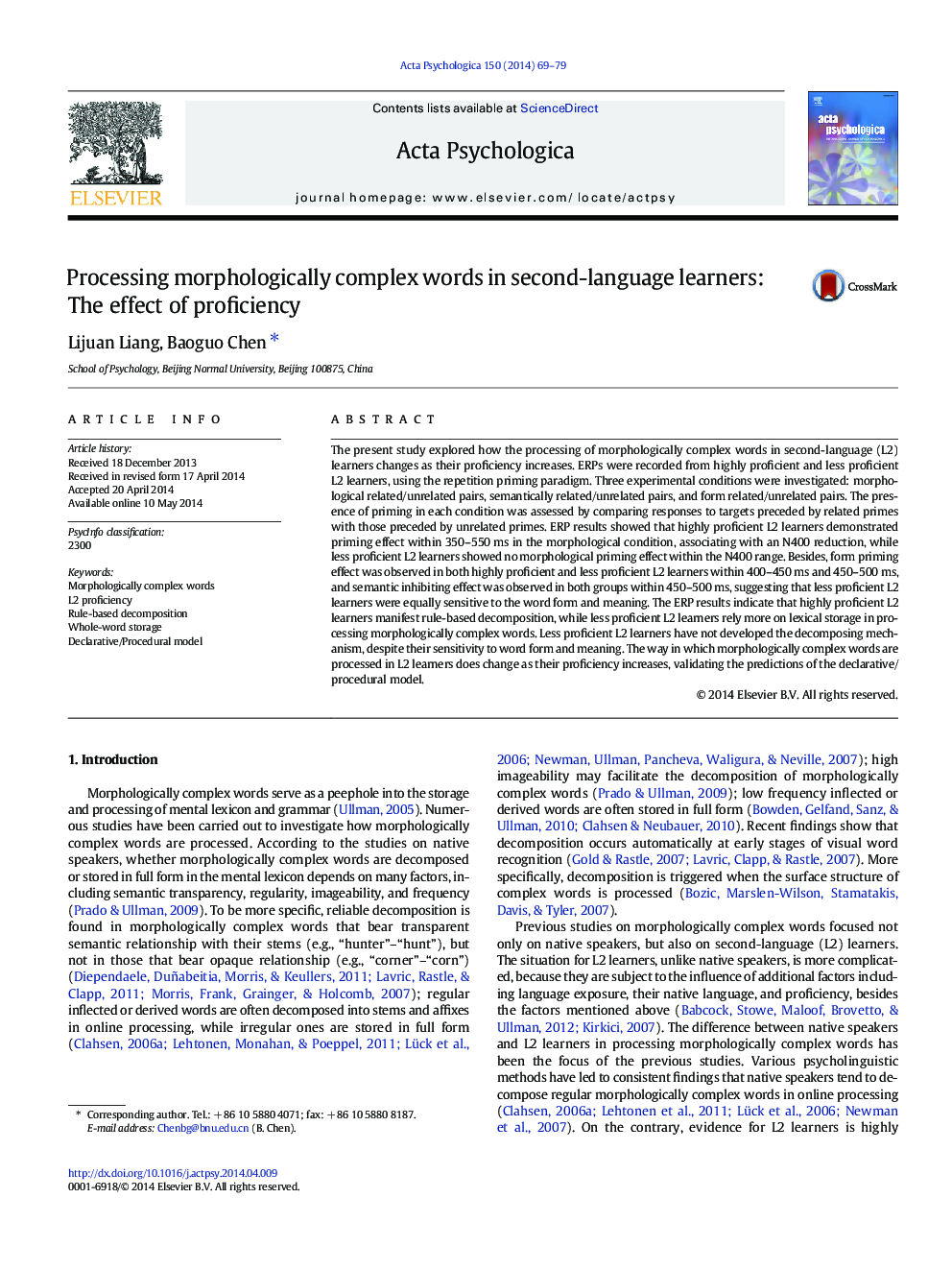| Article ID | Journal | Published Year | Pages | File Type |
|---|---|---|---|---|
| 919733 | Acta Psychologica | 2014 | 11 Pages |
•Highly proficient L2 learners manifest rule-based decomposition.•Less proficient L2 learners rely more on lexical storage.•Proficiency modulates how morphologically complex words are processed in L2 learners.
The present study explored how the processing of morphologically complex words in second-language (L2) learners changes as their proficiency increases. ERPs were recorded from highly proficient and less proficient L2 learners, using the repetition priming paradigm. Three experimental conditions were investigated: morphological related/unrelated pairs, semantically related/unrelated pairs, and form related/unrelated pairs. The presence of priming in each condition was assessed by comparing responses to targets preceded by related primes with those preceded by unrelated primes. ERP results showed that highly proficient L2 learners demonstrated priming effect within 350–550 ms in the morphological condition, associating with an N400 reduction, while less proficient L2 learners showed no morphological priming effect within the N400 range. Besides, form priming effect was observed in both highly proficient and less proficient L2 learners within 400–450 ms and 450–500 ms, and semantic inhibiting effect was observed in both groups within 450–500 ms, suggesting that less proficient L2 learners were equally sensitive to the word form and meaning. The ERP results indicate that highly proficient L2 learners manifest rule-based decomposition, while less proficient L2 learners rely more on lexical storage in processing morphologically complex words. Less proficient L2 learners have not developed the decomposing mechanism, despite their sensitivity to word form and meaning. The way in which morphologically complex words are processed in L2 learners does change as their proficiency increases, validating the predictions of the declarative/procedural model.
